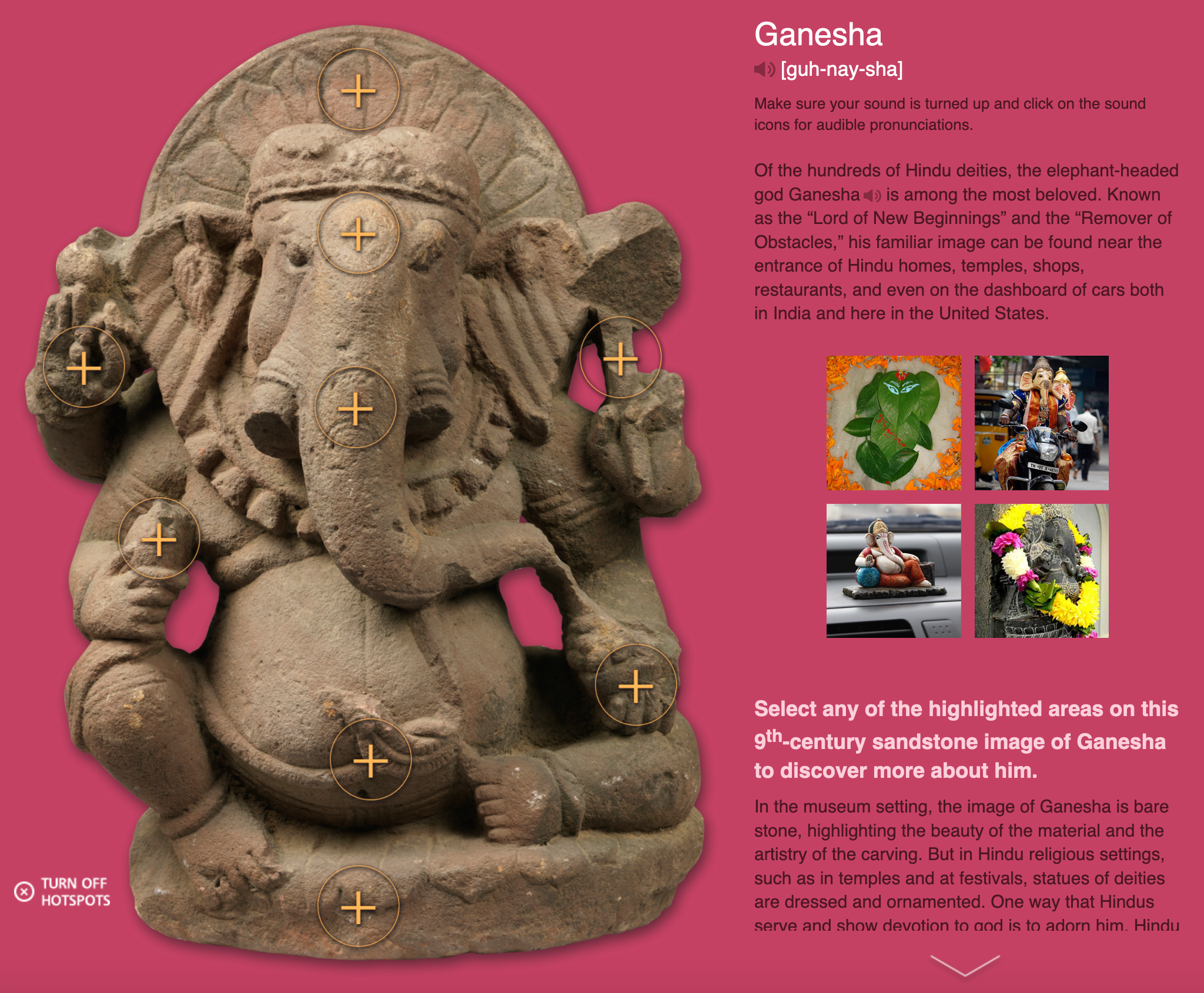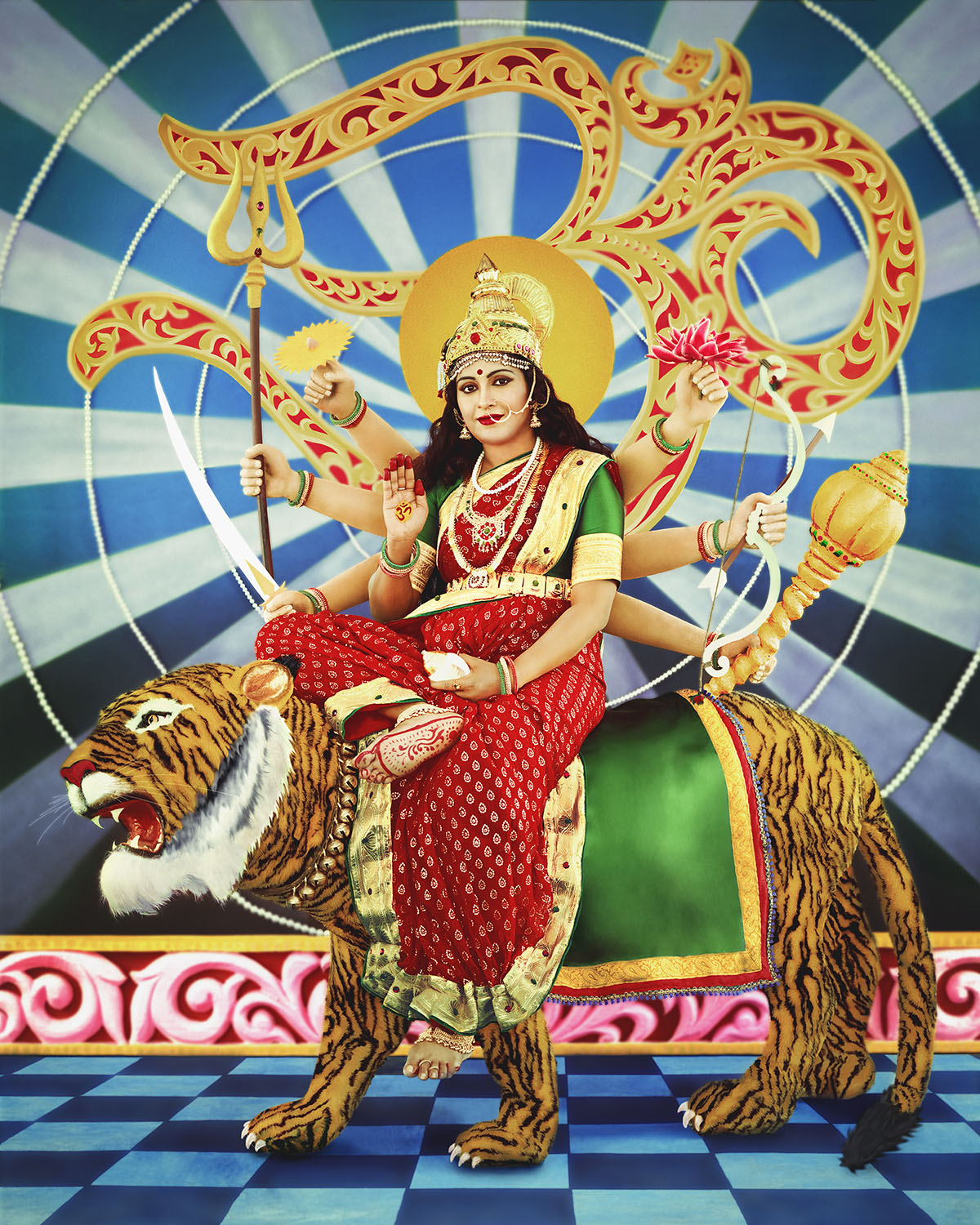Museums offer Indian art and culture


Of the hundreds of Hindu deities, the elephant-headed god Ganesha is among the most beloved. Known as the “Lord of New Beginnings” and the “Remover of Obstacles,” his familiar image can be found near the entrance of Hindu homes, temples, shops, restaurants, and even on the dashboard of cars both in India and here in the United States.
Join the interactive session here: https://carlos.emory.edu/htdocs/ODYSSEY/SOUTHASIA/ganesha.html
This is a part of the South Asian collections of Emory’s Michael C. Carlos Museum which represent living religious traditions that originated in India thousands of years ago and spread throughout Asia and around the globe. As the third- and fourth-largest religions in the world, Buddhism and Hinduism have millions of followers, not only in Asia, but here in the United States, and even in Atlanta.
Odyssey Online South Asia provides students a way to explore the works of art in the collections in depth and gain an understanding of the ways in which similar objects function in religious settings both in India and in Atlanta. See https://carlos.emory.edu/htdocs/ODYSSEY/SOUTHASIA
The Carlos Museum is closed to visitors until further notice. This decision was made out of an abundance of caution and in response to the rapidly evolving information regarding coronavirus (COVID-19). We look forward to connecting with you on Facebook, Instagram, and through our e-newsletter (https://carlos.emory.edu/connect) as well as through various online events and online activities. Visit carlos.emory.edu for updates.
A puzzle for you
Durga Maa
Carlos Museum brings you a puzzle of Durga Maa from a photograph by artist Majari Sharma for the exhibition, Transcendent Deities of India: The Everyday Occurrence of the Divine. Have fun working with the puzzle here.
Also listen to Manjari Sharma's talk here.

Buddha
While the Carlos Museum couldn't welcome you for Emory's annual Tibet Week, Professor Sara McClintock of Emory's Department of Religion, who was scheduled to speak about a thangka painting depicting the lives of the Buddha, has helped bring Tibet Week to you.
Using the central panel of the painting (below), she created a puzzle for you. It will provide you an opportunity to notice the details of the painting as well as a time for play—something we can all use!
Thanks to Jigsaw Planet, the Carlos Museum will continue to share puzzles made from works in the collection for you to enjoy. They will also be available on the museum website. You can make the puzzle easier or harder by selecting "Play As" in the top right corner of the screen.
Here is some information about what to look for in the painting from Professor McClintock:
- The central panel depicts the culminating event of the Buddha Śākyamuni's quest for enlightenment, the defeat of Māra (Māra-vijaya).
- Seated under the awakening tree (see the bodhi leaves at the top of the image), the Buddha is assailed by a demon army emanated by the deity Māra ("death"), the embodiment of all that is negative and unwholesome. Due to the strength of his mental training, the Buddha recognizes the ultimate unreality of all obstacles even as Māra's army rains down arrows and hurls curses upon him.
- Although not depicted here, traditional accounts of this event tell us that the projectiles turned into flowers before reaching their target, falling as offerings at the feet of the Buddha.
- As is typical in such scenes, the Buddha here touches the ground with his right hand, calling the goddess Bhūmi ("earth") as a witness to his millennia of positive and wholesome deeds.
-
https://www.jigsawplanet.com/?rc=play&pid=237ad8b62c8e

Enjoyed reading Khabar magazine? Subscribe to Khabar and get a full digital copy of this Indian-American community magazine.









